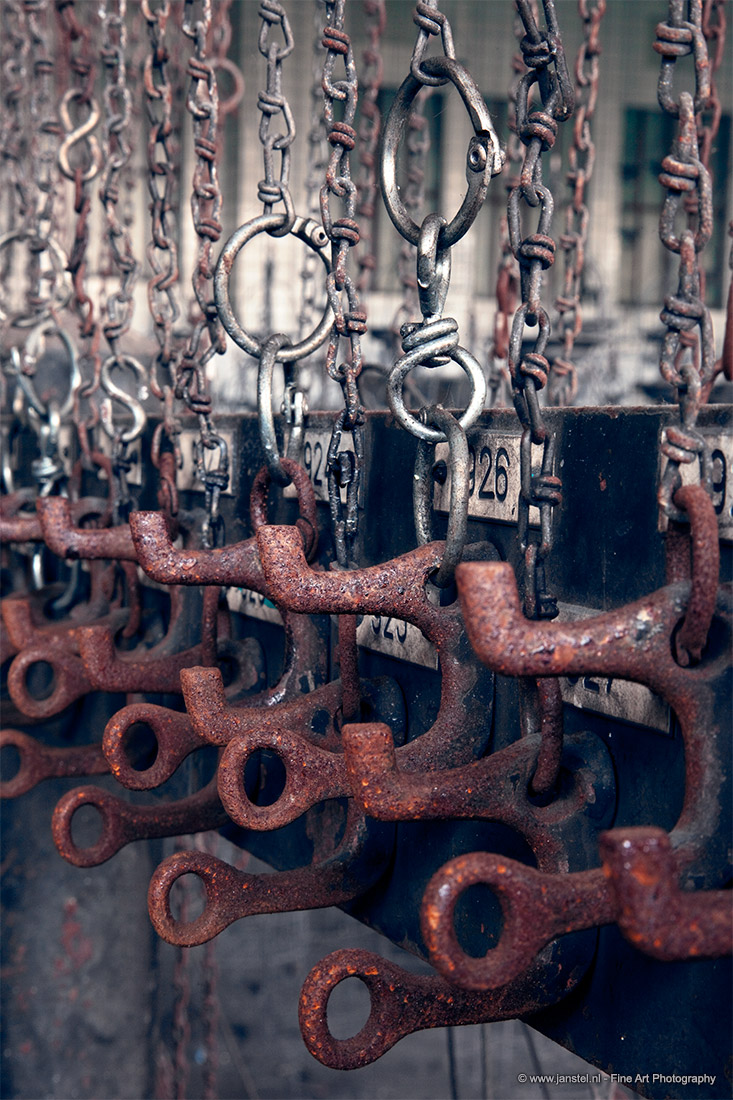“Inside this abandoned coal mining facility there is an immense hall filled with hundreds of baskets hanging on chains. It is a tremendous sight to behold. Walking around in there feels like being in a scene from a horror movie.”
For many years the Ruhr area of Germany was one of Europe's largest and most successful coal-mining regions. The economic crisis in the seventies and eighties started a large-scale decline that resulted in the closure of many mines, including Zeche Hugo. The urban surroundings are quiet nowadays and the once pervasive black coal dust is slowly fading away. Beside the industrial remains, the overgrown black hills in the surroundings have also been left behind. The facility’s large changing room is a most astonishing sight. It contains hundreds of steel baskets hanging from the ceiling on long iron chains. The miners placed their shoes, clothing and personal belongings into the baskets before they went underground. Using the chain, the miners would hoist their baskets up to the roof, so their belongings were protected from dust and theft. Doing this would lower another basket containing soap and other items they used to wash away the coal dust when they returned from the mine.
Zeche Hugo closed its doors in April 2000. All of the hard-working miners had to leave the port of Hugo for the last time; suddenly the city had three thousand newly unemployed workers. In recent years, nearly all of the buildings of the complex where demolished. Only one of the shaft towers is still standing and it has become a museum.
“The first photograph of the hall with the hanging baskets was taken from four meters above the floor. I had to hang onto a long, narrow platform that held fluorescent tubes underneath. The platform was suspended from the ceiling with thin steel cables. Hanging up there I had a fantastic view of the baskets, but it was a challenge to photograph from this spot. I could not use a tripod, so I had to keep myself as steady as possible. Holding my breath for as long as the shutter needed to be open for that one specific sharp photo took quite some practice.”







